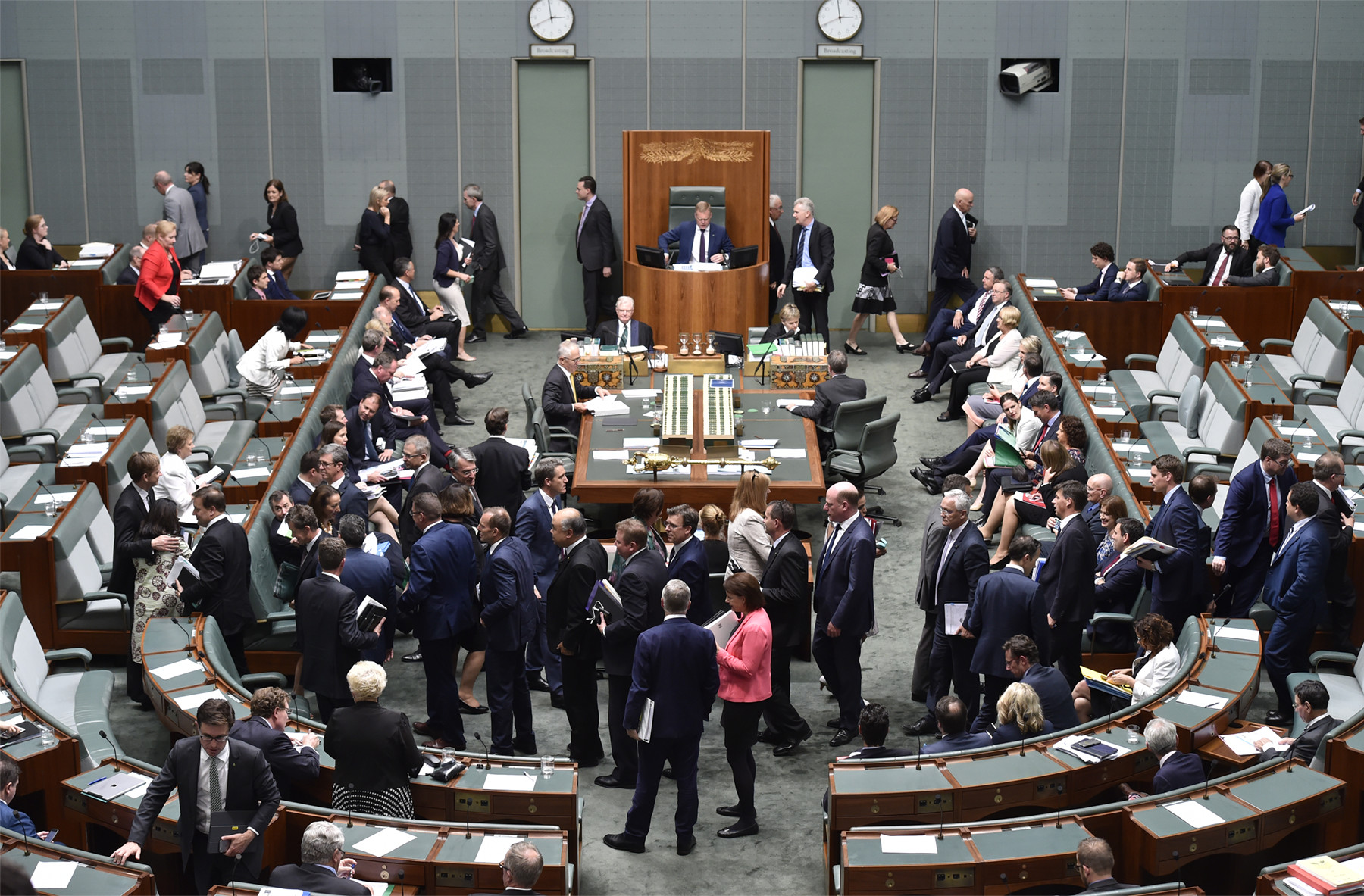Crossing the floor
If a member of a parliamentary party votes against their party it is called ‘crossing the floor’. This fact sheet explores how and when this happens and the possible outcomes of crossing the floor.
What will I learn?
- Crossing the floor means a member of parliament votes against their own team.
- Crossing the floor rarely happens.
- A free vote allows a member of parliament to vote according to their own beliefs.
What is crossing the floor?
For a question to be decided in Parliament, a vote must be taken. Parliamentary parties usually vote as a team, with all party members voting the same way. A member of a parliamentary party who votes against their party in a division is said to have crossed the floor.
How often does this happen?
The House of Representatives during a division

DPS AUSPIC
Description
A formal vote called a division happening in the House of Representatives. Members are dividing into two groups. Those voting 'aye' or 'yes' are moving to sit on one side of the House and on those voting 'no' are moving to sit on the other side.
Copyright information
Permission should be sought from DPS AUSPIC for third-party or commercial uses of this image. To contact DPS AUSPIC email: auspic@aph.gov.au or phone: 02 6277 3342.
Members of parliament may be convinced not to cross the floor because:
- their party provides support and financial security in return for their loyalty
- their party may impose a ban on crossing the floor
- their action may only make a difference if enough people cross the floor to change the result of a vote. Without enough support, crossing the floor may be a controversial act that does not change the result.
If a party or coalition of parties has a small majority of only one or two votes, it becomes even more important for team members to stick together. Party whips – team managers – are responsible for making sure party members know how to vote and are not planning to cross the floor. In close votes, whips must be on the lookout for how team members vote.
Free vote
In a free vote – sometimes called a conscience vote – members of parliament are not required to vote with their party. Free votes have mostly been used to decide issues such as euthanasia, stem cell research or same-sex marriage.
Each parliamentary party decides if its members are allowed a free vote. Parliamentary parties may allow this type of vote to stop team members crossing the floor on a controversial issue which could cause embarrassment to the party, or to allow members of parliament to express their own beliefs.
Free votes are rare. From 1950 to 2021, only 43 votes on bills and other issues in the Parliament were decided by a free vote.
History
Although crossing the floor is rare now, it happened more often in the past. From 1950 to 2019, 295 members of parliament crossed the floor, representing 23% of all members of parliament who served in this period. Only 12% of divisions were affected by these floor crossings. Tasmanian Senator Reg Wright, who served from 1950 to 1978, crossed the floor 150 times. This is the most times any member of parliament has done so.